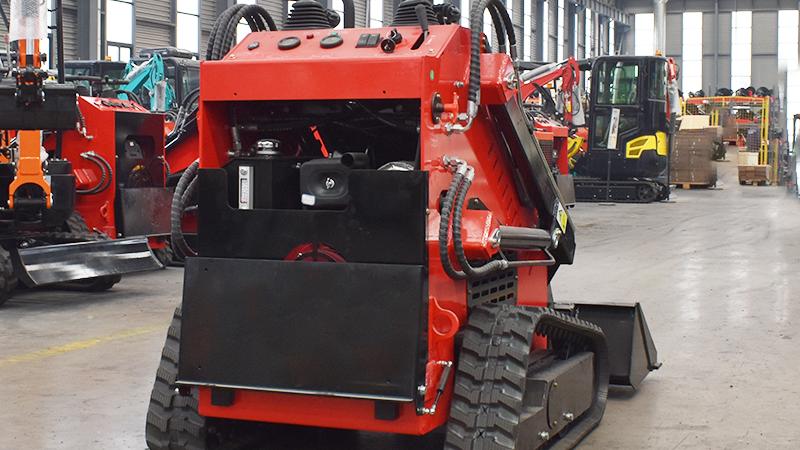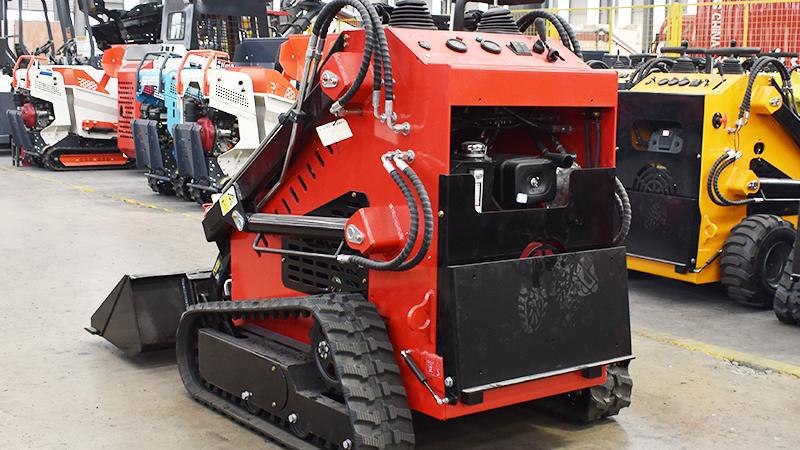Skid steer loaders are indispensable workhorses on construction sites, farms, and landscaping projects, but like all complex machinery, they are prone to specific operational problems. Understanding these common skid steer problems and their troubleshooting methods is crucial for maintaining productivity and avoiding costly repairs. Among the most frequent issues operators face are hydraulic system failures, which can manifest as weak or slow operation, excessive noise, or oil overheating. Troubleshooting these symptoms often begins with checking the most straightforward components first. Inspect the hydraulic fluid level and condition; low fluid or fluid that is dark, milky, or contains debris is a primary culprit. Next, examine the hydraulic filters; clogged filters are a common cause of poor performance and system damage. Listen for unusual whining or knocking sounds from the hydraulic pump, as this could indicate cavitation due to a restricted inlet line, worn pump components, or air entering the system. For overheating, ensure the hydraulic oil cooler is clean and free of debris blocking the fins, and verify that the oil being used meets the manufacturer's exact viscosity and type specifications. Regular maintenance, including timely fluid and filter changes according to the service schedule, is the most effective preventative measure against the vast majority of hydraulic problems, ensuring the powerful and responsive performance that skid steers are known for.
Moving beyond hydraulics, engine-related problems constitute another major category of skid steer malfunctions, often leading to failure to start, loss of power, excessive black or white smoke, and overheating. Troubleshooting engine issues requires a systematic approach, starting with the fuel system. A very common problem, especially after a period of inactivity, is fuel filter blockage or water contamination in the fuel. Draining water separators and replacing fuel filters should be a first step. If the engine cranks but won't start, check the fuel shut-off solenoid and listen for the priming pump operation. For engines that start but lack power, inspect the air intake system; a clogged air filter is a frequent and easily remedied cause. Black smoke typically indicates an overly rich fuel mixture, often from a dirty air filter, while white smoke can suggest incomplete combustion, potentially from faulty fuel injectors or incorrect engine timing. Engine overheating can be caused by a low coolant level, a malfunctioning thermostat, a damaged water pump, or, similar to hydraulic issues, a radiator clogged with dirt and debris. Consistent maintenance of the engine's "big three" – clean fuel, clean air, and clean coolant – is paramount to preventing these disruptive and power-sapping engine problems.
The electrical system in a modern skid steer, while enabling advanced functionality, is a common source of frustrating problems, particularly as the machine ages. Typical electrical faults include a complete failure to crank, intermittent operation of switches and gauges, and issues with the charging system. When the skid steer fails to start and you hear only a clicking sound or nothing at all, the primary suspects are the battery and its connections. Corroded, loose, or damaged battery terminals are a surprisingly common cause. Use a multimeter to check the battery voltage; a reading below 12.4 volts likely indicates a weak or dead battery that needs charging or replacement. If the battery is healthy, the problem may lie with the starter motor or solenoid. For intermittent electrical issues, focus on the wiring harness and connectors; look for frayed wires, loose plugs, or corrosion, especially in areas subject to vibration or moisture. A malfunctioning alternator will fail to charge the battery, leading to a gradual loss of electrical power; this can be diagnosed by checking the battery voltage with the engine running – it should read between 13.5 and 14.5 volts. Regular visual inspections of the battery, cleaning terminals, and ensuring all electrical connections are secure can prevent a significant number of these electrical gremlins.
Finally, some of the most common skid steer problems are related to the machine's core structural and drive components, namely track or tire wear and drive system failures. For tracked skid steers, premature track wear or derailment is a major concern. This is often caused by improper track tension; too loose and the track may derail, too tight and it will wear out rapidly. Always follow the manufacturer's recommended tensioning procedure. For wheeled models, uneven tire wear can indicate problems with tire pressure or misalignment. The drive system itself, which includes pumps, drive motors, and chains, can also fail. A skid steer that pulls to one side or has weak drive on one or both sides may have a problem with a drive motor or a hydraulic leak affecting that circuit. Unusual grinding or clunking noises from the wheels or chain cases can signal bearing failure or broken drive chains. Troubleshooting these mechanical issues often requires a more advanced level of expertise. However, operators can perform daily checks of track tension and tire condition, listen for abnormal noises, and be alert to changes in the machine's handling. Promptly addressing these signs by consulting a professional technician can prevent minor issues from escalating into major, expensive component replacements, thereby extending the service life and reliability of the skid steer loader.
Post time:Nov.05.2025



